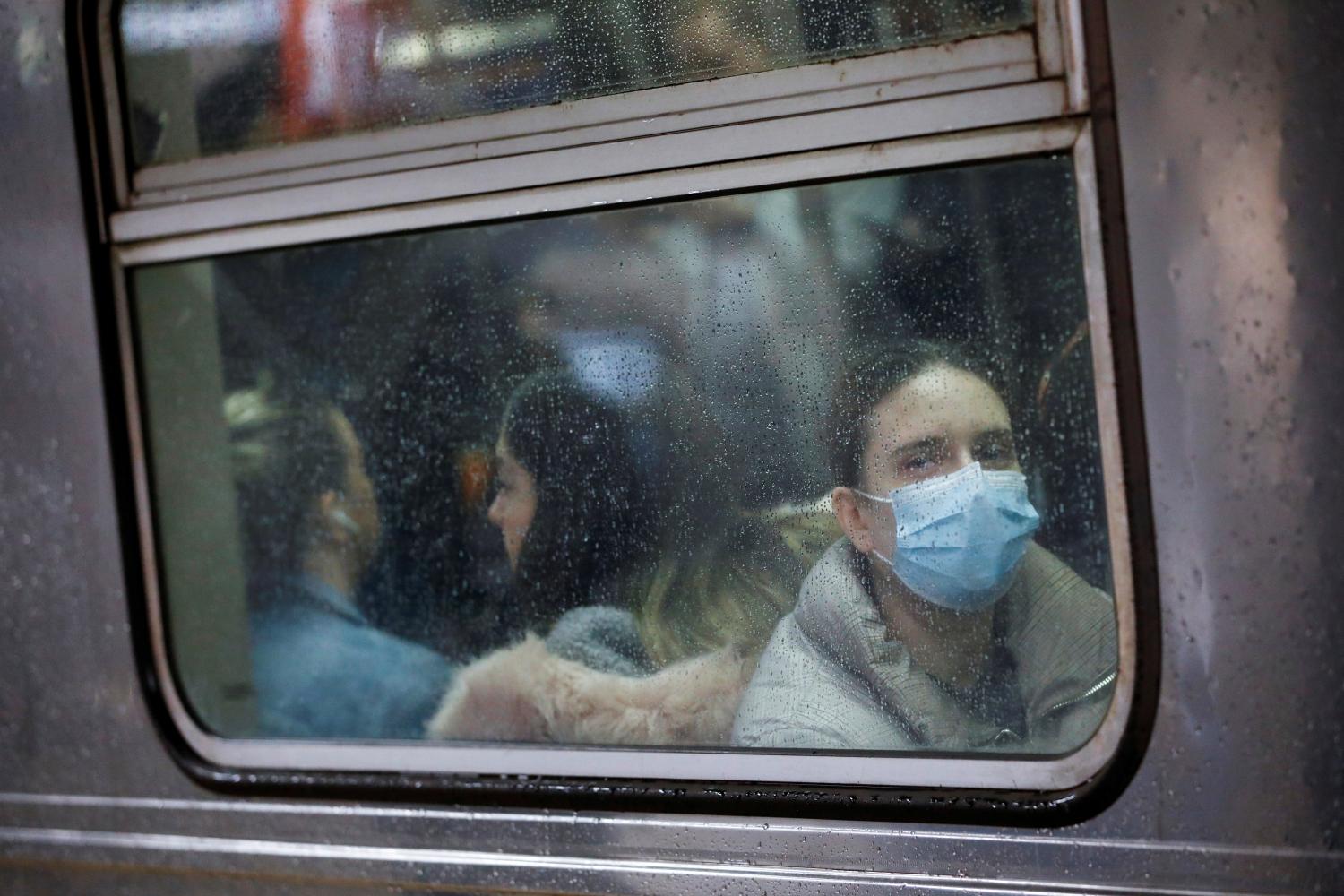The coronavirus pandemic is revealing a harsh truth: Our failure to coordinate governance across local and state lines is costing lives, doing untold economic damage, and enacting disproportionate harm on marginalized individuals, households, and communities. New York Governor Andrew Cuomo explained the problem in his April 22 coronavirus briefing, when discussing plans to deploy contact tracing:
“If I turn up positive, yeah, my residence is in Westchester County, but I work in New York City, and I would have contacted many more people in New York City than I did in Westchester…If you’re going to do these tracing operations, you can’t do it within just your own county, because you will quickly run into people who are cross-jurisdictional.”
As the pandemic unfolded in early March, policy responses such as school and restaurant closures were a patchwork stitched together by mayors, county executives, and governors with varying levels of effectiveness. The $150 billion in fiscal aid to state and local governments under the CARES Act was similarly scattered to states, counties with more than 2 million residents, and cities with more than 1 million residents. Hypothetically, states and counties would channel funds to smaller jurisdictions within their boundaries. However, there are many regions in the U.S. that span multiple cities, counties, and even states, which are now facing uneven access to relief.
Governor Cuomo’s observation that reopening and recovery from COVID-19 must be regionally coordinated is obvious. But doing so is, as he later stated, “harder done than said” without an established framework. Some governors and local leaders are recognizing this and making sincere efforts, while others are not. We have yet to comprehend the full scope and scale of the mismatch between our governance and our reality.
A pandemic knows no borders, but at every turn our policies are confined by them. Before the arrival of the coronavirus, our planning processes formalized many inequities within and across regions, ranging from hospital bed availability to housing inventory to environmental racism, which have hindered our ability to outmaneuver the virus and made its impact steeply disparate. We need equity-based regional governance institutions that align with the map of our lives to coordinate relief and recovery faster and fairly.
Before the coronavirus arrived, both established metropolitan regions and “megaregions”—combinations of two or more metro areas—were consolidating at unprecedented levels. This brief presents evidence documenting these trends, and makes the case for new state and federal policy frameworks to address cross-jurisdictional equity problems1 that emerge when everyday activities happen in a megaregion.
The roots of urban governance in the U.S.
Conventional ideas about urban governance in the U.S. were largely born during the Progressive Era of the early 1900s—a time without cars, when downtowns were the center of cultural change and economic growth. These same policies were used to actively create and enforce racial segregation in the era of Jim Crow. After World War II and the Civil Rights movement, residential suburbanization, white flight, car-centric lifestyles, and a corresponding disinvestment in dense urban cores dominated the American landscapes of development. These patterns of uneven growth didn’t necessarily require us to rethink governance, because the basic concepts of municipal authority and the regulatory regimes that authorities used in cities translated fairly well to the new town councils and county boards that emerged.
More recently, however, the hyper-agglomeration of knowledge sector jobs and the suburbanization of both jobs and poverty have shifted the spatial dynamics and politics of urbanization yet again. This time, capital has reinvested in the established downtowns and into suburban activity centers. The results are large polycentric regions, or a “megapolitan America” in which jobs, housing, and consumption tend to take place across multiple municipal jurisdictions more than ever before. It is no longer rare for someone to commute between cities or town centers, or for suburban municipalities and small towns to invest in creating or recreating a more dense and walkable downtown district.
Indeed, these trends are reflected in the most recent data available from the U.S. Census Bureau’s Longitudinal Employer-Household Dynamics survey. Since the most recent definition of a metropolitan region was established by the Office of Management and Budget (OMB) in 2000 (and revised in 2010), two U.S. metro areas have been officially merged only once, when the Bristol, Va. and Kingsport-Bristol, Tenn. metropolitan statistical areas (MSAs) merged in 2003. Seventeen years later, however, the data show new and unprecedented polycentricity in metro areas across the U.S. (see Appendix). Pending confirmation from the American Community Survey, four U.S. megaregions (combinations of MSAs that meet OMB criteria to merge) have emerged:
- Raleigh-Cary and Durham-Chapel Hill in North Carolina
- Oxnard-Thousand Oaks-Ventura, Riverside-San Bernardino-Ontario and Los Angeles-Long Beach-Anaheim in southern California
- Ogden-Clearfield, Provo-Orem, and Salt Lake City in Utah
- Worcester, MA-CT and Boston-Cambridge-Newton, MA-NH
This trend, combined with the urgent need to address disparate impacts of the pandemic within megaregions, suggests that it is time to seriously rethink urban governance mechanisms.
Preexisting inequalities within regions created the uneven impacts of COVID-19
Inequality has been increasing both within and between regions in the U.S., and the coronavirus is the straw breaking the camel’s back. The lack of regional governance institutions is particularly problematic for addressing equity problems within regions. For example, a worker may live in a lower-cost municipality and work in a wealthier one. The revenues generated in the wealthy area will not normally support the services available in the worker’s lower-cost neighborhood if it is in a different county. There are many other consequences to having a mismatch between how we define administrative boundaries by a single municipality and the polycentric spatial patterns of our everyday lives:
- Land use decisions are made at the local level (county and municipal), but housing supply is frequently not created in proximity to jobs. This becomes an environmental and transportation problem for everyone, but it is especially costly for lower-income municipalities that absorb the excess demand for housing that high-cost cities fail to meet, and the low-income workers who bear the costs of commuting long distances.
- Governance friction between adjacent jurisdictions makes it challenging to efficiently utilize existing transportation infrastructure, and individual jurisdictions have little leverage or incentive to make coordinated decisions with a neighboring jurisdiction about how and where to locate new infrastructure capacity.
- Local workforce development areas under federal workforce policy are not required to align with regional economic development areas, making it difficult for economic development planners to partner with workforce boards to strategically connect workers with available jobs and job creation initiatives as a region.
- Jurisdictional boundaries often separate privileged white communities from Black and Latino or Hispanic communities, who must then travel farther for work, breathe more polluted air, and host more than their share of toxic-land uses. Fragmented governance within a region becomes the structural foundation for environmental racism, which COVID-19 has exacerbated in Black and Latino or Hispanic communities with already-disproportionate health and financial costs.
- In slow-growth regions where resources are most finite, unsustainable growth continues to spread at the urban fringe via high-cost infrastructure investments built by short-term accounting with long-term borrowing, while established neighborhoods decline.
The greater Bay Area exemplifies many of these challenges. It is an emerging polycentric megaregion where homelessness, displacement, rising housing costs, traffic, and super-commuting have become increasingly untenable. As of 2016, Stockton, Calif. is the only MSA in the United States where a majority of working residents are employed in other MSAs, with the largest single flow being 20% to San Francisco-Oakland-Hayward. Moreover, an estimated 47% of all workers living in the Stockton MSA earn low wages. The large share of low-wage workers commuting out of Stockton suggests that this area has become a bedroom community of essential but lower-wage workers who help keep the Bay Area economy going, yet they commute so far (at great environmental and personal cost) because they can’t afford to live where they work. The Stockton MSA also doesn’t benefit from the tax revenue base that wealthier MSAs accrue, which makes it challenging to provide services to its residents.

There appear to be at least two distinct types of polycentric megaregions emerging in the U.S.:
- Very large cities with job growth and commuting sheds that are expanding into neighboring MSAs and cities, such as the New York, Los Angeles, and Boston megaregions.
- Networks of smaller MSAs that have become polycentric megaregions, such as Cleveland-Elyria, Akron, and Canton-Massillon in Ohio; Greensboro, High Point, and Winston-Salem (the Piedmont Triad) in North Carolina; and Salt Lake City, Provo, and Ogden (the Wasatch Front) in Utah.
Some of these emerging megaregions cross state lines (New York, Washington-Baltimore, and Boston-Worcester-Providence). In every case, increasing polycentricity is generating governance challenges that will require new approaches to solving problems.
An agenda for regional research and policy
In the short run, states and local areas are in dire need of fiscal relief to boost their capacity to respond to the COVID-19 pandemic, cover budget shortfalls, and keep their local workforce employed. Although there are specific issues (such as contact tracing and reopening strategies) that clearly require some level of informal cross-jurisdictional coordination, most local and state governments will not have any capacity to engage in governance reform efforts until the situation stabilizes.
However, as local municipalities and states begin the long process of recovery, the continued failure to address fractured governance within regions and megaregions will weaken our capacity to address problems at the scale required and exacerbate intra- and interregional inequality. There are already better models in some regions of the U.S. and in many countries around the world, but further research is needed to flesh out the strengths and limitations of various approaches to regional governance. Key features to consider in assessing different approaches include:
- Revenue sharing. State legislatures can act to establish and fund regional governments. Oregon Metro (Portland) and the Twin Cities’ Metropolitan Council in Minnesota are models. A guiding principle must be to neutralize subregional competition and maximize cooperation for economic development efforts through revenue sharing.
- Voluntary or mandated. Regional planning can be undertaken voluntarily through cooperation or mandated and supported by a funding stream. Most feasible and effective regional planning entities or efforts will likely contain elements of both. However, strictly voluntary cooperative models lead to “planning in a vacuum” with insufficient resources and enforcement for implementation.
- The appropriate scale. Environmental stewardship objectives operate at an ecosystem scale, while housing and transportation challenges operate at the scale of labor markets. Tying revenues from land use change and utilities to environmental management would create new mechanisms to align costs and benefits and to mandate and program environmental justice initiatives. The Pinelands Commission of New Jersey is a precedent.
- Multistate regions. The federal government could act to establish trans-state regional authorities in regions such as New York, Washington, D.C., Boston, and Kansas City, Mo. The Tennessee Valley Authority is a precedent.
- Organizational capacity and authority. Designated metropolitan planning organizations (MPOs) are an existing mechanism for directing federal funds to regions for program administration related to transportation. However, these organizations vary significantly in their structure, capacities, implementation authority, and effectiveness. Federal legislation (and corresponding resources) could streamline and standardize these entities, and center equity objectives in their mandates.
- Rail prioritization. In Designing the Megaregion, Jonathan Barnett emphasizes the importance of “fast-enough rail” linking cities. We could be doing a better job prioritizing and funding regional, state, and federal rail projects that align with the demand for intercity rail mobility demonstrated by the commuting flows of established and emerging megaregions.
Implications for inclusive growth and regional planning
Defining the territorial bounds of a region, as well as how and whether to do it at all, has been the subject of intense debate in urban studies and economic geography for a long time. Attempts to define and bound ever-changing regional spaces and imaginaries have consequences for consolidating political power, aligning various interests (and stakeholders), and forming regional identities. In an age of global production, rising economic inequality, persistent spatial segregation, and the emergence of “superstar” cities in the U.S. such as San Francisco, Seattle, and Boston, a chronic undersupply of housing and rising costs are pushing many workers in those areas farther and farther away from their jobs. As Amy Liu and Nathan Arnosti noted, the link between sustained regional growth and equity and the institutional arena for achieving more inclusive growth has emerged as one of the defining challenges of the early 21st century, both within and across regions.
Many metropolitan regions in the United States are already facing regional governance failures. As megaregions emerge, this failure is magnified in scale, scope, and impact. In practice, this leads to a dynamic of competition across jurisdictions instead of cooperation. With the arrival of a global pandemic, we are paying a price in lives for failing to address these structural issues.
The need is immediate as we face a major public health crisis with a disproportionate impact on Black and Latino or Hispanic communities. In the long run, aligning planning and resource allocation with how we live is the only way to truly create inclusive growth and shared prosperity.
-
Footnotes
- Note: The coronavirus may also exacerbate regional economic divergence. Although those dynamics are important, they are outside the scope of this brief.
The Brookings Institution is committed to quality, independence, and impact.
We are supported by a diverse array of funders. In line with our values and policies, each Brookings publication represents the sole views of its author(s).









